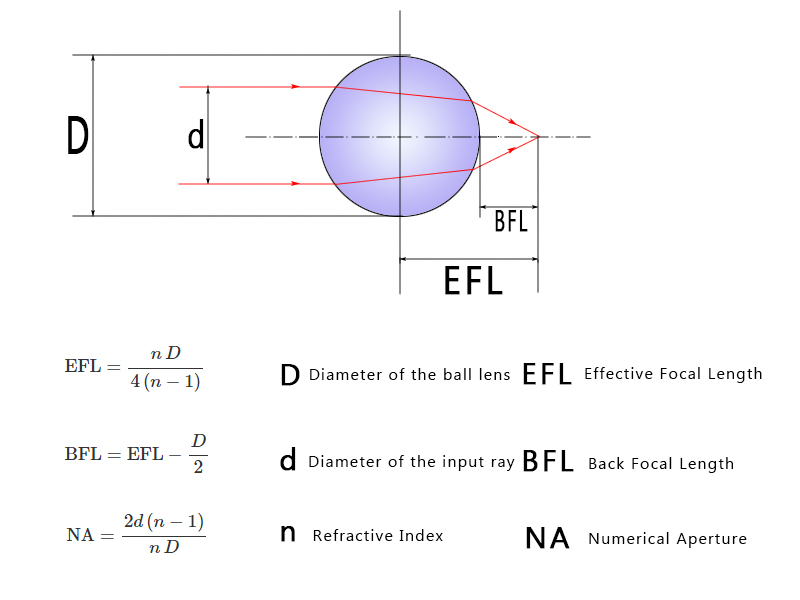$23.00
Specifications:
| Materials | Sapphire | Lens Type | Ball lens |
| Diameters(mm) | 10.0 | Diameter Tolerance (μm) | +/-2.5 |
| Design Wavlength(nm) | 587.6 | EFL (Effective Focal Length) (mm) | 5.75 |
| BFL (Back Focal Length) (mm) | 0.75 | Sphericity (μm) | 2.0 |
| Surface quality | 40/20 S/D | Irregularity(@633nm) | λ/4 |
| Coating | None | Wavelength Range (nm) | 170-5500 |
Ball lenses belong to a special form of biconvex lenses which have the geometry of a ball(sphere). They are manufactured from a single material, usually an optical glass with good transparency in the wavelength region of interest. The typical applications of ball lenses include focusing light in the field of fibers(e.g. laser to fiber coupling ,fiber to fiber coupling), emitters and detectors , majorly to collimate light depending on geometries of the input light source. Also they could be ball pre-forms of aspheric lenses where they are purposefully deformed in order to prevent spherical aberrations.
Half-Ball lenses are variants of ball lenses, obtained by simply cutting the ball lenses in half.Due to ease of mounting brought by the one flat surface,they are ideal for applications where more compact designs are required , such as fiber communication, endoscopy, microscopy, optical pick-up devices, and laser measurement systems.
Hangzhou Shalom EO provides both stocked and custom ball lenses and half ball lenses made from N-BK7, UV fused silica, Sapphire and high index optical glass materials.The specification of custom ball and half ball lenses could be varied upon your request.
Here are some key features of sapphire:
Sapphire: Optcial grade Sapphire,chemically composed as aluminum oxide (Al2O3) with mono crystalline structure, is used in transmission range from 0.2 - 5.5μm,which is a fairly wide range, and is particularly suitable for MWIR 3-5μm thermal imaging applications.
Sapphire lenses are made from single crystal sapphire, they are ideal for high demanding applications because of their outstanding performance, consisting of superior surface hardness ( 9 on the Mohs scale ,the third hardest mineral, after diamond at 10 and moissanite at 9.5, which means high resistance to scratch and abrasion ), high thermal conductivity, high dielectric constant and resistance to common chemical acids and alkalis. Additionally, sapphire features a high index of refraction and excellent broadband transmission characteristics.
